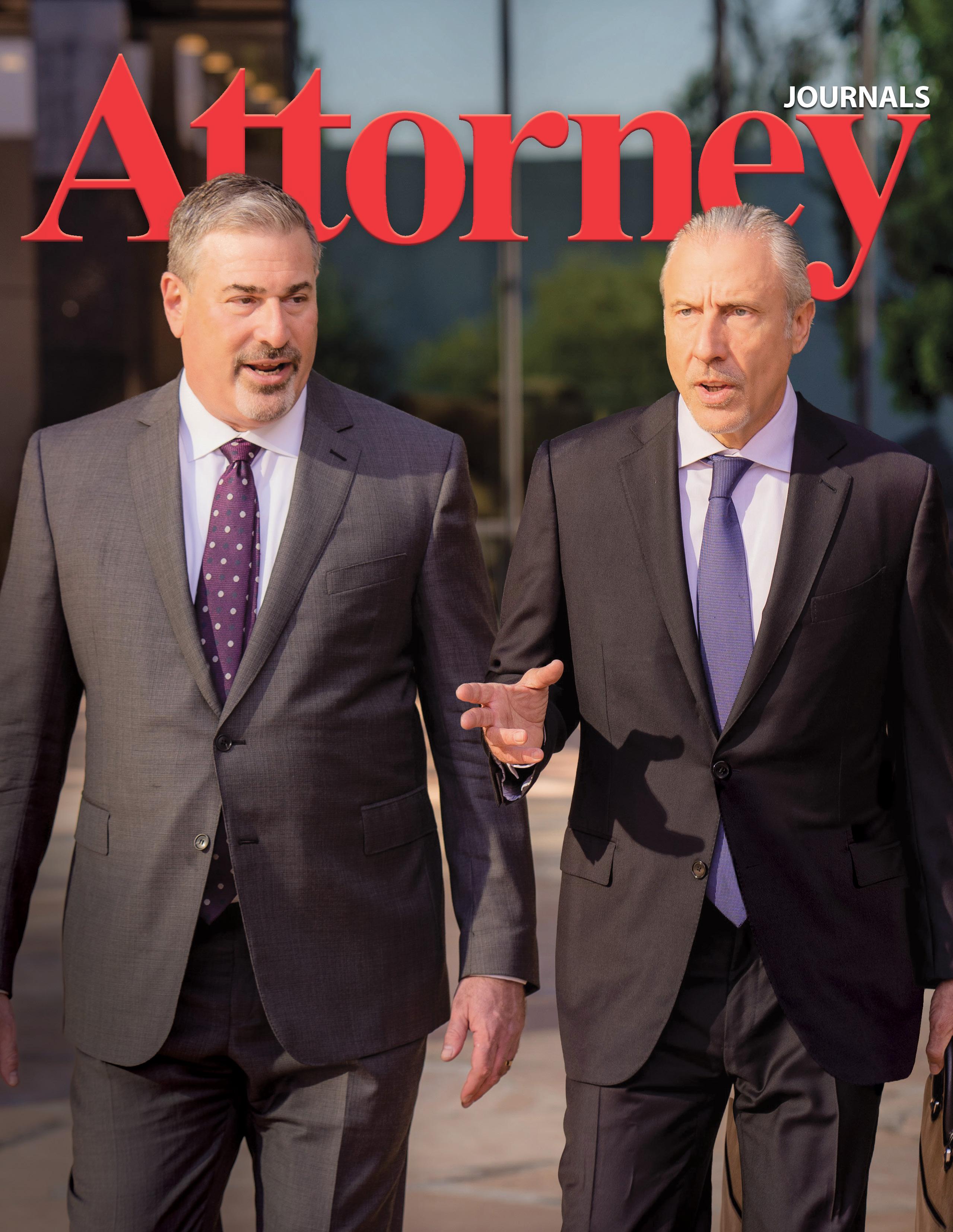
Greenberg Gross LLP Serving San Diego The Continuing Evolution of Greenberg Gross LLP Law Firm of the Month SAN DIEGO Volume 231, 2022 $6.95 Curating Content for Your Target Audiences Wayne Pollock How to Overcome Challenges When Marketing a Law Firm Guy Alvarez Top 8 Marketing Automation Tools for Law Firms Kevin Vermeulen Developing a Sales Process for Your Law Firm Steven M. Bell When to Consider a Co-Mediator Rex D. Smith
• $22,659,551 settlement for clients defrauded in a local Ponzi scheme in Levin v. Chicago Title, et al. (2021)(Michael Kirby & Jason Kirby).


• Complete defense jury verdict in real estate dispute and more than $400,000 collected for attorneys’ fees and costs in Batter v. McElhinney, et al. (2019)(Jason Kirby).
• $2.1 million jury verdict for firm client in Doe v. San Diego Unified School District, et al. (2018)(Jason Kirby & Michael Kirby).

• $1.1 million arbitration award for firm clients on cross-complaint after zeroing plaintiff on $6 million damage claim in Step Strategy Advisors v. Solid Gold Health Products for Pets, Inc., et al. (2018)(Jason Kirby lead counsel).


501 West Broadway | Suite 1720 | San
92101 | 619-487-1500 | www.kirbyandkirbylaw.com
Diego, CA
SPECIALIZING IN COMPLEX BUSINESS LITIGATION BET-THE-COMPANY CASES OVER 65 YEARS OF COMBINED EXPERIENCE REFERRALS/SUBSTITUTIONS ACCEPTED AT ALL STAGES OF LITIGATION, INCLUDING TRIAL
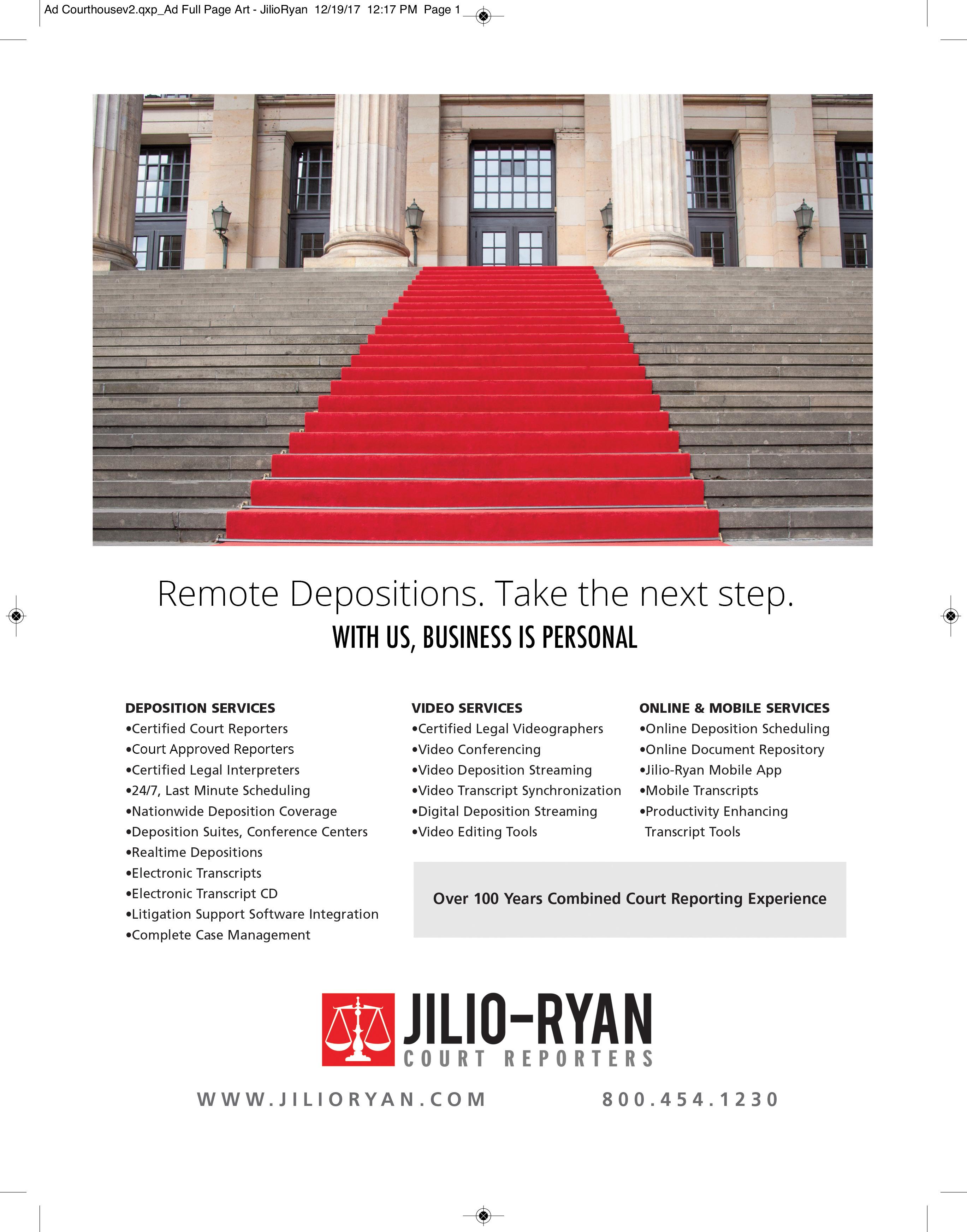

Attorney
Attorney


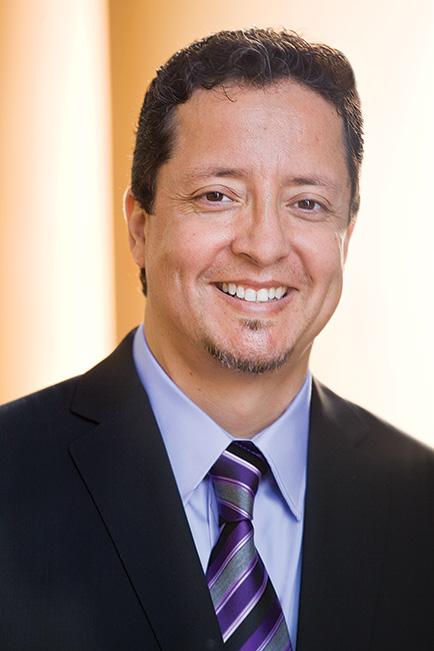
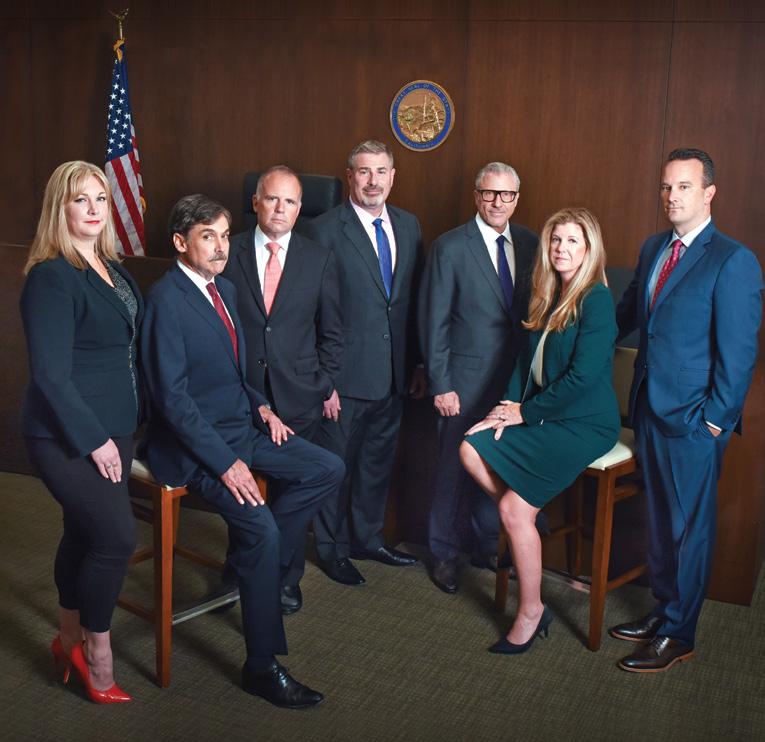
Attorney Journals
informational
authors
Editorial material appears in
as an
service for readers. Article contents are the opinions of the
and not necessarily those of Attorney Journals.
Journals makes every effort to publish credible, responsible advertisements. Inclusion of product advertisements or announcements does not imply endorsement.
Journals is a trademark of Sticky Media. Not affiliated with any other trade publication or association.
Copyright 2022 by Sticky Media. All rights reserved. Contents may not be reproduced without written permission from Sticky Media.
EXECUTIVE PUBLISHER Brian Topor EDITOR Wendy Price PUBLICATION DESIGN Penn Creative CIRCULATION Angela Watson PHOTOGRAPHY Chris Griffiths STAFF WRITERS Dan Baldwin Jennifer Hadley CONTRIBUTING EDITORIALISTS Guy Alvarez Steven M. Bell Wayne Pollock Rex D. Smith Kevin Vermeulen ADVERTISING INQUIRIES Info@AttorneyJournals.com SUBMIT AN ARTICLE Editorial@AttorneyJournals.com OFFICE 30213 Avenida De Las Banderas Suite 200 Rancho Santa Margarita, CA 92688 www.AttorneyJournals.com ADDRESS CHANGES Address corrections can be made via email or postal mail. TABLE OF CONTENTS 2022 EDITION—NO.231 6 When to Consider a Co-Mediator by Rex D. Smith 8 Top Eight Marketing Automation Tools for Law Firms in 2022 by Kevin Vermeulen 10 Curating Content for Your Target Audiences When You’re too Busy to Create It by Wayne Pollock LAW FIRM OF THE MONTH 16 Greenberg Gross LLP, Serving San Diego The Continuing Evolution of Greenberg Gross LLP by Dan Baldwin 24 How to Overcome Challenges When Marketing a Law Firm by Guy Alvarez 28 Developing a Sales Process for Your Law Firm by Steven M. Bell 6 16 24
Printed in the USA
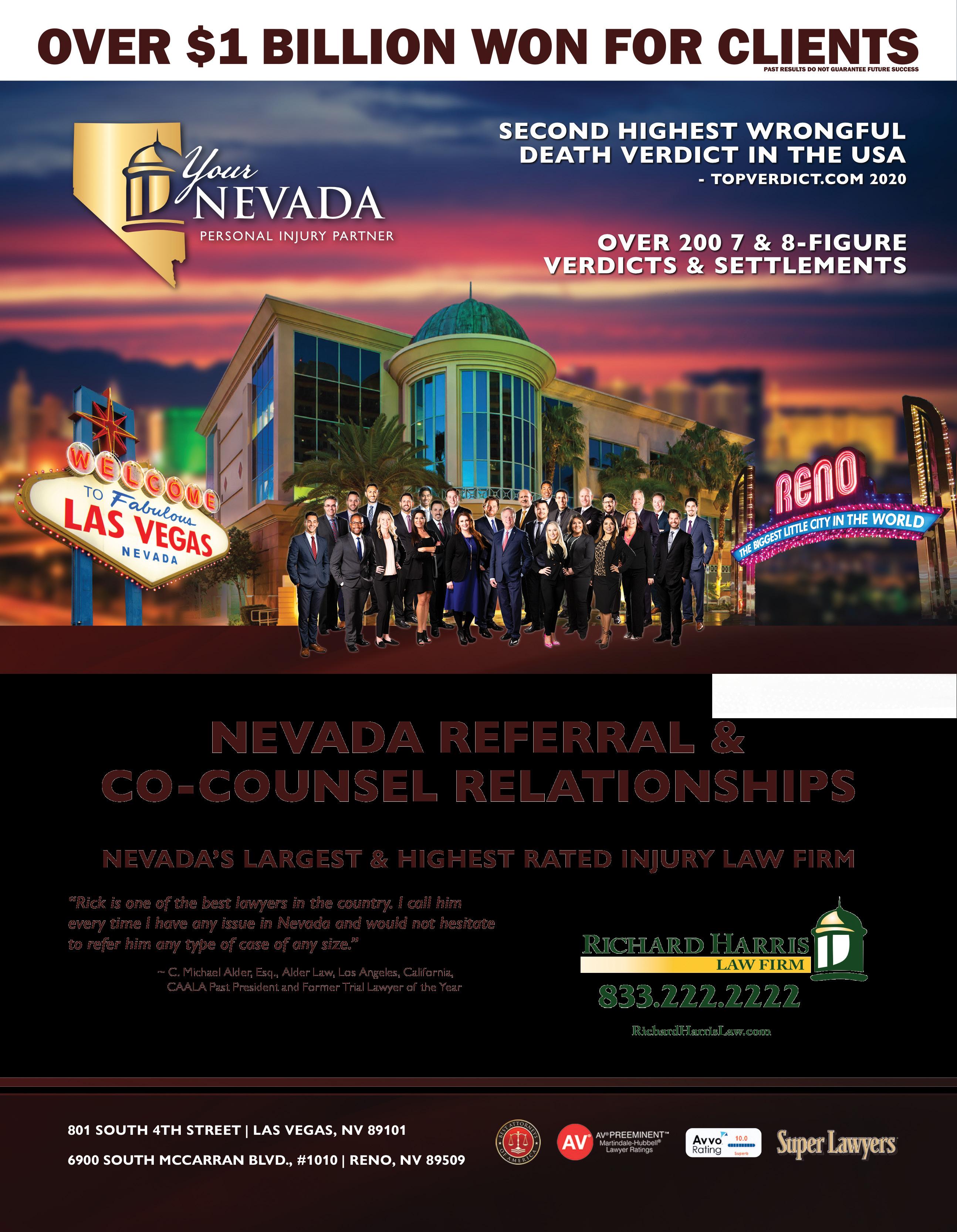
Two Can Be Better Than One: When to Consider a Co-Mediator
 by Rex D. Smith
by Rex D. Smith
While people’s definitions of mediation may vary, the underlying purpose of mediation is simple: to resolve the dispute between the parties. That is, to settle the case. That means that as a mediator, you’re being paid to settle lawsuits. To do so effectively, you may start preparing well in advance of the mediation. And in some cases, you may want to consider bringing on a co-mediator.
What types of cases may benefit from having a comediator? What should you consider when you work with one? Here are some thoughts on how to determine whether to use a co-mediator, and the value he or she can bring to the table.
A Case Study of Co-Mediation
I first worked with a second mediator in a case about 15 years ago. Approximately 180 homeowners who had access to a 200-acre lake sued 23 different developers and property owners who had developed a very large upstream watershed, alleging Clean Water Act violations. As the surrounding area was developed, the watershed was affected, and the lake began to fill up with silt.
While the nature of the case wasn’t complicated, the sheer number of parties made the idea of a second mediator appealing. While I knew we’d need at least two days to mediate, I suggested having two mediators to reduce the overall mediation time.
We had 180 different plaintiffs, so one of our first priorities was to help them get organized. Before the mediation, the plaintiffs’ counsels had the plaintiffs elect and give authority to six members of the homeowners’ association who would represent and speak for them and bind them in any mediation.
Once we had the committee elected, we began reaching out to the defendants’ counsels, discussing ways to best prepare and organize the defendants. This was done primarily through a
series of conference calls but also included in-person meetings. Through these efforts we identified one of the lead defense attorneys who was instrumental in getting the defendants organized.
We also began preparing a draft of the settlement memorandum well in advance of the mediation. After we had agreement on the defense’s side, we presented the memo to the plaintiffs. This led to a series of conversations and drafts that culminated in an agreed settlement memo prior to the mediation. The only issue at mediation was money.
After we had all the ground rules in place, we met and mediated the case. We rented space that included one very large room for the openings, a large room for the plaintiffs, and then separate rooms for the defendants.
The case had several “major” defendants and many smaller ones. As the mediation progressed, one of the main defendants agreed to put in a sizable amount to settle the case, but that was dependent on two groups of the other defendants matching the number. I had my co-mediator working with the minor defendants to see if they could come up with their challenge number while I was working with the other major defendants to come up with their challenge number. That gave us a large negotiating pool. While we weren’t going to offer all the money at the same time, once we knew we had a certain amount to settle, we were able to move quite expeditiously.
In this case, a co-mediator saved a significant amount of time. The value to the parties was clear— between all the attorneys’ fees, executive time, salaries for the claims professionals, and mediator fees, we were probably spending $20,000 an hour, and having a second mediator (at a rate of $700 an hour) saved us at least four hours of time. To paraphrase Bob Dylan, “It doesn’t take a math major to see which way the dollars flow.” Over the two-day period, the co-mediator saved the parties approximately $65,000.
6 Attorney Journals San Diego | Volume 231, 2022
Considering a Co-Mediator
Yet I’ve only used a co-mediator in a handful of cases. Some were class actions that involved multiple defendants and we used a co-mediator who worked with the parties in a similar fashion to the way we worked with the above case. In another case with six or seven plaintiffs, the parties agreed to a co-mediator to help reduce the wait time.
Different factors could lead you to consider using a co-mediator—the number of parties involved. The size and complexity of the case. Parties with special considerations. However, the principal one is whether having a co-mediator returns value by saving significant amounts of time—and potentially leading to a greater potential for settlement.
The Power of Preparation
Considering a co-mediator is only one issue you face in any mediation. In the Japanese classic, The Art of War, the author, Sun Tzu, says that every battle is won or lost before you see the enemy. The theory is that the more preparation you can do, particularly on these large cases, early on, the more likely you are to be successful. So, if you get a mediation notice, and there are many parties, one suggestion would be to promptly email the attorneys to get a sense of what you are dealing with.
When you find out you have an atypical or complex case with a lot of different issues, start trying to narrow down what you can, and get done as much as you can ahead of time. If you have a case with ten different parties, you can figure out how much more it would cost each party to bring in a second mediator. If it’s, say, an extra $40 or $50 an hour per party, they will often see the value in that.
The more parties involved, the more time it will take to mediate. If we’re trying to mediate a case in one day, and it has more than five plaintiffs, consider recommending a co-mediator. It saves time and the cost can be shared among the parties. If you have, say, nine plaintiffs and one defendant, and we’re going to mediate for ten hours in that situation, the parties are
basically sitting around for nine hours to be with the mediator for an hour. When you have a co-mediator, that can halve the amount of time they’re waiting.
If you have a large, complicated case, another option is to plan on a multiple-day mediation. Those cases may also benefit from a co-mediator so that your time and energy are being used productively to get the parties the value they want. You’re looking for the most efficient path to success, and sometimes that’s more time and sometimes that is a co-mediator. Sometimes it’s both.
Preparing a Co-Mediator
Finally, if you plan to use a co-mediator, be clear with him or her ahead of time about what the person’s role will be. That’s part of the planning process. Decide how you will use your time, and how you can be effective for the parties—whether that means your co-mediator is taking responsibility for the settlement memo or making sure the numbers are going back and forth as quickly as possible. That way, when you are mediating, you both understand your roles, and what you are to do. You don’t want to get into a mediation and have two mediators debating what they think they should do next.
The bottom line? For complicated or multi-party lawsuits, a co-mediator can play an invaluable and value-driven role in helping to resolve the disputes that led to litigation. Ultimately, that is the goal of every mediation, and a compelling reason to keep this option in mind. n
Rex D. Smith was admitted to the Georgia Bar in 1976. In his 40 years of active practice, he tried over 100 cases and had a strong trial and appellate practice. Mr. Smith has handled over 3,000 mediations/arbitrations. He has been selected by his peers to “Best Lawyers in America”, “Georgia Super Lawyers” and holds the AV® Preeminent rating, the highest possible Martindale-Hubbell Peer Review Rating. Rex has extensive experience in personal injury, construction, products liability, wrongful death, professional negligence, medical malpractice, aviation, nursing home litigation, and premises liability law. Learn more at www.milesmediation.com.
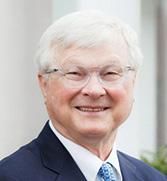
7 Attorney Journals San Diego | Volume 231, 2022
Different factors could lead you to consider using a co-mediator...However, the principal one is whether having a co-mediator returns value by saving significant amounts of time—and potentially leading to a greater potential for settlement.
Marketing automation refers to the use of software and other technologies to automate repetitive tasks and improve the effectiveness of online marketing, including email, social media, websites, and any content you publish. Marketing automation is tremendously beneficial in so many ways. A well-designed automation workflow saves time, reduces errors, increases audience engagement, and boosts the ROI of your law practice’s marketing efforts. If you’re not currently using a marketing automation system, it’s time to explore your options. Here are several marketing automation tools that make sense for law firms.
TOP MARKETING AUTOMATION TOOLS FOR LAW FIRMS
Concep
Concep is an easy-to-use email marketing platform with automation capabilities designed specifically for law firms. One of its biggest selling points is its powerful native integrations with LexisNexis InterAction and Microsoft Dynamics 365, the sector’s two most commonly used CRMs.
With their integrations, forms, and analytics, you can automate your most common workflows/processes, such as your events management process—from invites and RSVPs, to list creation and data management, making it easy to connect with potential clients. While its automation capabilities aren’t as powerful as Marketo’s or Hubspot’s, Concep fulfills most law firms’ needs and its simplicity is reflected in its cost and ease of use.

HubSpot


HubSpot is an all-in-one, easy-to-use marketing automation platform for lawyers and law firms of every size. HubSpot integrates customer relationship management, social media scheduling, automated email marketing, and much more! You’ll get lead flows, forms, drip emails, analytics, and more— all designed to make it easy for you to efficiently grow your law
Top 8 Marketing Automation Tools for Law Firms in 2022
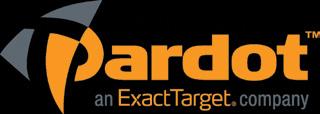 by Kevin Vermeulen
by Kevin Vermeulen
firm’s database with their CRM software. Capture leads, learn who they are and what they’re interested in, and optimize your marketing based on data, not guesswork. HubSpot also offers the added benefit of the Sales and Service Hubs, which means your team can better work together—even across departments. HubSpot’s capabilities make automating important tasks easy, so you can reach prospective clients in a number of ways. HubSpot also offers a free trial so you can try it before you buy.

Marketo


One of the best-known and most mature tools, Marketo is a robust platform that works best for large law firms that will take advantage of every feature the tool offers. Unlike HubSpot, Marketo’s interface is dated and hard to navigate if you don’t know what you’re doing. Despite that, it is a powerful marketing automation tool for lawyers. The advanced functionality is reflected in the price tag, so it makes sense to explore this option only if you have a sophisticated marketing strategy to execute.
Constant Contact
Easy to use and affordable, this platform is a well-known email marketing software. They don’t offer comprehensive campaign solutions, but most small law firms are able to meet their email needs with the tool. With Constant Contact, you can create automated trigger campaigns, collect new emails automatically, and send segmented follow-up messages. If you plan to expand your digital marketing beyond email programs, this might not be the business tool for you, especially if you’re not a small firm.
Oracle Eloqua
A top-tier tool, Eloqua offers superior service and fees that match. Eloqua integrates with many enterprise systems, such as customer relationship management (CRM) and other thirdparty applications. With Eloqua, law firm marketers can create targeted campaigns through multiple channels, such as email, social, mobile, web, and search. They can also track and analyze the results of their campaigns with built-in analytical tools. If
8 Attorney Journals San Diego | Volume 231, 2022
your firm has an enterprise-level marketing department and a matching budget, this tool could be a good fit.

ExactTarget/Pardot
Owned by Salesforce, this tool allows law firms to easily target communications over several channels and makes client intake easy. Pardot is designed for B2B companies, vs. the B2C functionality that Exact Target offers. If you want to really take advantage of marketing automation to take your lead generation efforts to the next level, this is a good option to explore.
Customer.io
Customer.io is a marketing platform for sending targeted and automated emails, push notifications, and SMS messages to engage and retain your audience. The interface for building campaigns, workflow, and the trigger definition and usage are pretty simple. If you can put in some developer time, this email automation platform offers a customized experience for building marketing campaigns.
Hootsuite
A social media automation tool, Hootsuite is one of the more robust options for managing all aspects of social for legal professionals. It’s designed to help marketers schedule content and keep a pulse on what’s happening online with their brand. Generally speaking, Hootsuite has everything that your firm would need to create an impactful social presence.
Takeaway: If your online marketing has become complex and/or time-consuming, automation could be the solution your law firm is looking for. When used correctly, it’s a great way to increase the efficiency and effectiveness of your marketing. Whether you’re creating posts for social media, sending out an email marketing campaign, wanting to use a CRM tool to organize your prospects, or converting leads from LinkedIn, Facebook, and Twitter, marketing automation platforms make it all possible with just a few clicks. n


Kevin Vermeulen is Partner and Chief Operating Officer for Good2bSocial. He has over 30 years of marketing and advertising experience, including 22 years working in various senior management roles, including Chief Revenue Officer and Chief Marketing Officer for ALM Media, a leading legal publisher, helping lawyers, law firms, consultants and companies grow their business. During Kevin’s tenure at ALM, he worked with professional services companies in the financial, digital, real estate and legal industries.
Peterson Reporting.
Providing nationwide service since 1986.
From day one of your deposition to the last day of your trial, Peterson Reporting is an indispensable member of your trial team. Proven professionalism and proficiency for more than 25 years.
Locally owned, globally known.
530 B Street, Suite 350 San Diego, CA 92101
Since 1986 petersonreporting.com
619 260 1069 Reporting Videography Trial Presentation Free Conference Rooms Live Streaming Services Video Conferencing Services Global Reach Complex Cases Accurate, Fast Peterson AttJrnl HPV.indd 1 7/12/13 5:04 PM
Call to request green delivery of your transcripts and receive a discount.
9 Attorney Journals San Diego | Volume 231, 2022
5 Reasons to Curate Content for Your Target Audiences When You’re too Busy to Create It
by Wayne Pollock
As you could have guessed by the company I founded and the content I publish, I’m a big believer in content marketing and thought-leadership marketing for lawyers and law firms. I think it is the key way for law firms and their lawyers to build their practices, to build their prominence, and to fuel their marketing and business development efforts.
But oftentimes, lawyers are too busy to be writing the kinds of blog posts and bylined articles, and producing podcasts and videos, that help them demonstrate the knowledge and wisdom that reinforces their authority and prominence in their legal practices. When that is the case, lawyers and their firms should consider curating content and not just relying on creating original content to do that authority building and to get out in front of current and prospective clients and referral sources.
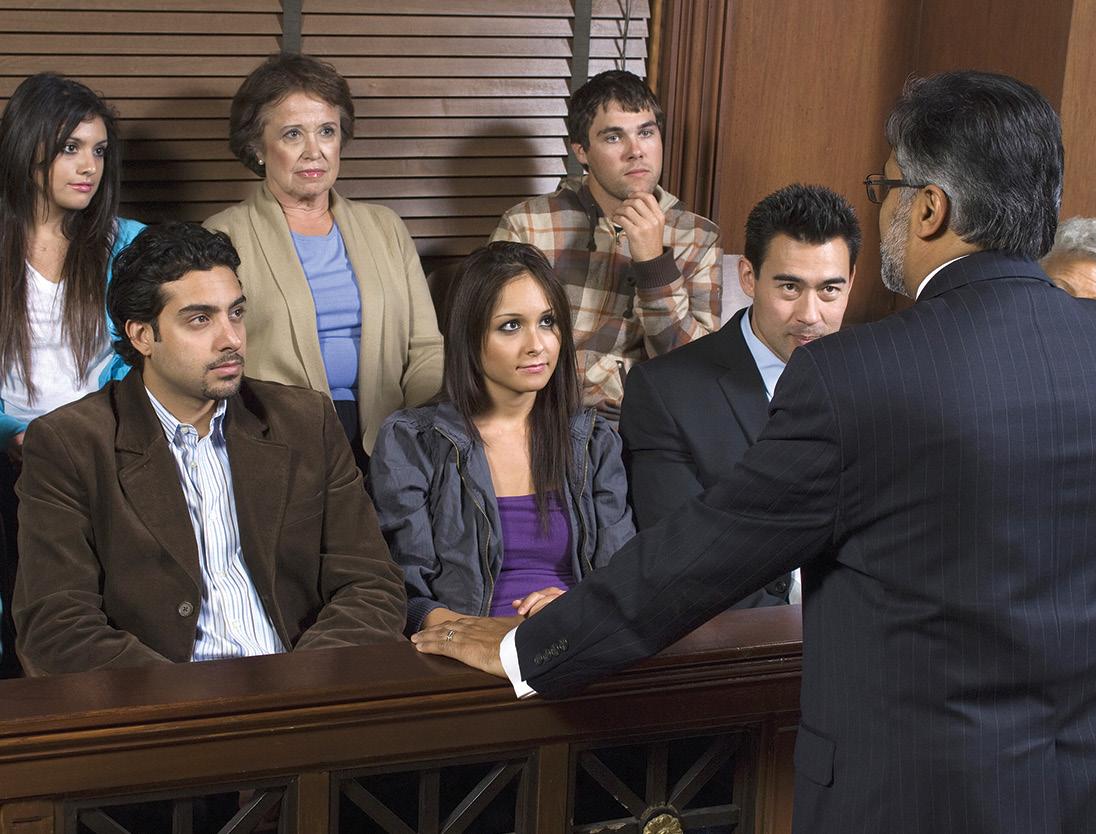
When I’m talking about content curation, I’m talking about compiling relevant news articles, thoughtleadership pieces (from outside your firm), and other pieces of content that are relevant to your past, current, and prospective clients and referral sources, and then including short (i.e., no more than a handful of sentences) blurbs that summarize the content and explain why the recipient should care. Most often, this is going to be in the form of an email newsletter, but it could easily appear in the form of a blog post.
It might seem strange that you can build authority regarding the areas of law you practice and the industries you serve merely by compiling content regarding both. But you can—directly and indirectly. Here are five reasons why curating content is an effective way for lawyers and law firms to build thought leadership and their authority when they’re unable to create content themselves.
Curated content helps position the lawyer or law firm sending that content as an authority both regarding the areas of law they practice as well as the issues the content’s recipients are dealing with. When you send content regarding legal issues, business issues, and societal issues that could impact your recipients’ business operations, you’re showing you’re cognizant of the issues they might be dealing with, or soon will be, as part of their day-today responsibilities.
Your target audiences will interpret your inclusion of content regarding these issues as an indication that you are knowledgeable about these issues, and that you might be able to help them deal with those issues as they face them. After all, to be cognizant of these issues and to curate articles and insights about them is to understand they are relevant to your target audiences. Additionally, your blurbs accompanying each piece of curated content, assuming those blurbs are well-written and show you’ve given some thought about why the topic of that curated content is relevant to your target audiences, will further evidence your ability to connect the dots between what’s happening in the world and how those events and trends are impacting your target audiences.
If you’re skeptical of this idea, imagine receiving a newsletter from a “handyman” company you’ve used in the past. Now imagine that newsletter includes best practices for installing outdoor security cameras, new trends for kitchen remodels, and how to “baby proof” your home.
You can build your authority and show thought leadership through content you curate for your clients and referral sources, not just content you create yourself.
Curating relevant content makes you appear knowledgeable about the subject matter of that content
10 Attorney Journals San Diego | Volume 231, 2022
What impression does the inclusion of these articles give you? That the company is knowledgeable about these services—and related ones—and can perform them for you, right? For that reason, this handyman company will probably be among the first companies you call for help regarding those services or related ones.
Curating content takes less time than creating content
When you’re curating content, you’re not spending five, six, seven hours sitting down and writing a 1500-word blog post or bylined article for an external publication. You’ll be spending much less time than that compiling the content you’ll be curating (especially if you compile that content on an ongoing basis as you encounter it in the course of your own content consumption) and drafting the accompanying blurbs before sending both to a colleague to assemble and distribute as an email blast or publish as a blog post.
Going one step further, you could also delegate much of this work. You could task someone with monitoring 10, 15, 20 different online sources on a regular basis and pulling for you a group of potentially interesting articles from which you would select the handful to include in the next curated collection. You could also task a colleague with writing the first draft of the blurbs so that all you’ll need to do is to review them and, if necessary, edit them.
with, and position you favorably for more work from those clients down the road.
Content you curate can inspire the content you’ll eventually create
When you’re curating content for your target audiences, you’re being exposed to content containing different topics, angles, and perspectives that you might not have otherwise been exposed to in the course of your day-today work. Chances are good that these additional topics, angles, and perspectives will inspire you—consciously or subconsciously—to eventually write about a topic that is related to your legal practice and relevant to your target audiences.
For example, let’s say you advise fintech companies on regulatory issues. In the course of your curation efforts, you come across an article in which a fintech startup founder is quoted as saying their company is operating within an area that has not yet been addressed by regulators. Skeptical about what you’re reading, you do five minutes of research concerning the regulation you would have assumed would cover what this startup is doing. You learn the founder is correct. You’re concerned about the implications for consumers if this startup grows like wildfire before regulators swoop in and regulate this gray area. You feel so strongly about this issue that you commit to writing an article for Reuters or Bloomberg Law about it.
We all, occasionally, put our noses to the grindstone for periods of time during which we’re so busy with the work we have on our plates that we don’t pick our heads up and take a look around. We miss interesting news items and other pieces of content because we’re just too darn busy.
When you’re consistently curating content, you have no choice but to take a look at what’s happening around you and consume timely content. By being forced to stay abreast of what’s happening within the worlds which your clients (and referral sources) exist, you will be both a better lawyer/advisor and, perhaps, a better business developer. Issues raised in content you’re consuming as part of your curation efforts may prompt you to discuss those issues with your clients. Those discussions could strengthen that relationship, show that you are knowledgeable about the issues your clients are dealing
Curating content gives you an opportunity to connect with the people whose content you’re curating
When you curate content, you have the ability to build relationships with the people whose content you’re curating, especially if you tend to include a particular author’s content on a regular basis. They’ll certainly appreciate you getting their work out in front of more eyeballs. For that reason, you could reach out to them and say:
Hi—I’m a lawyer who handles [insert practice]. I’ve included a handful of your articles over the past few months in my curated email newsletter that goes out to my [insert industry] clients, including [insert titles of/links to articles]. I think you’re doing great work. If you ever have a question about a legal issue regarding the [insert industry] industry, or if you’re interested in ideas or trends to write about, please reach out to me. I’d love to chat.
Curating content forces you to stay abreast of what’s going on in the worlds within which your clients exist
11 Attorney Journals San Diego | Volume 231, 2022
Likewise, you could ask the people whose content you’re curating if their publications accept articles written by lawyers. Again, by mentioning that you’ve been curating their publications’ content recently, you might start a relationship that bears fruit for you through your efforts to build your authority and get in front of your target audiences through content curation.
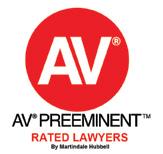
Content curation isn’t content creation, but it can still be an effective authority building tool
When you curate other people’s content, you’re not going to be seen the same by your target audiences as if YOU created all of that content. But that’s OK. For the reasons I described above, you are still highly likely to be seen as an authority concerning the work you do, and the topics covered by the content you’re curating.
Interestingly, you have the opportunity when you curate content to be seen as an authority on a larger universe of issues than those you normally would have written about. You are unlikely to be covering pure business issues and tangential societal issues in content you write. But you’d

certainly want to curate that content because it impacts your clients’ professional (and likely personal) lives. Plus, by curating content concerning a wide range of relevant topics, you may be seen as an authority when it comes to your clients’ industries and business issues generally because you are alerting clients to content regarding the whole range of issues they face, not just the legal issues that you would normally write about.
When building your authority, your prominence, and your book of business, few if any tactics are more effective than consistently creating relevant, valuable, and compelling thought-leadership content. But when you don’t have the time to do so, content curation can still help you position yourself as an authority in your field—and even brings with it benefits above and beyond those offered by creating content. n
Wayne Pollock is the founder of the Law Firm Editorial Service. The Law Firm Editorial Service sets free the knowledge and wisdom trapped inside Big Law and boutique law firm partners by collaborating with them to strategize and ethically ghostwrite book-of-businessbuilding marketing and business development content. Learn more at: www.lawfirmeditorialservice.com.




12 Attorney Journals San Diego | Volume 231, 2022

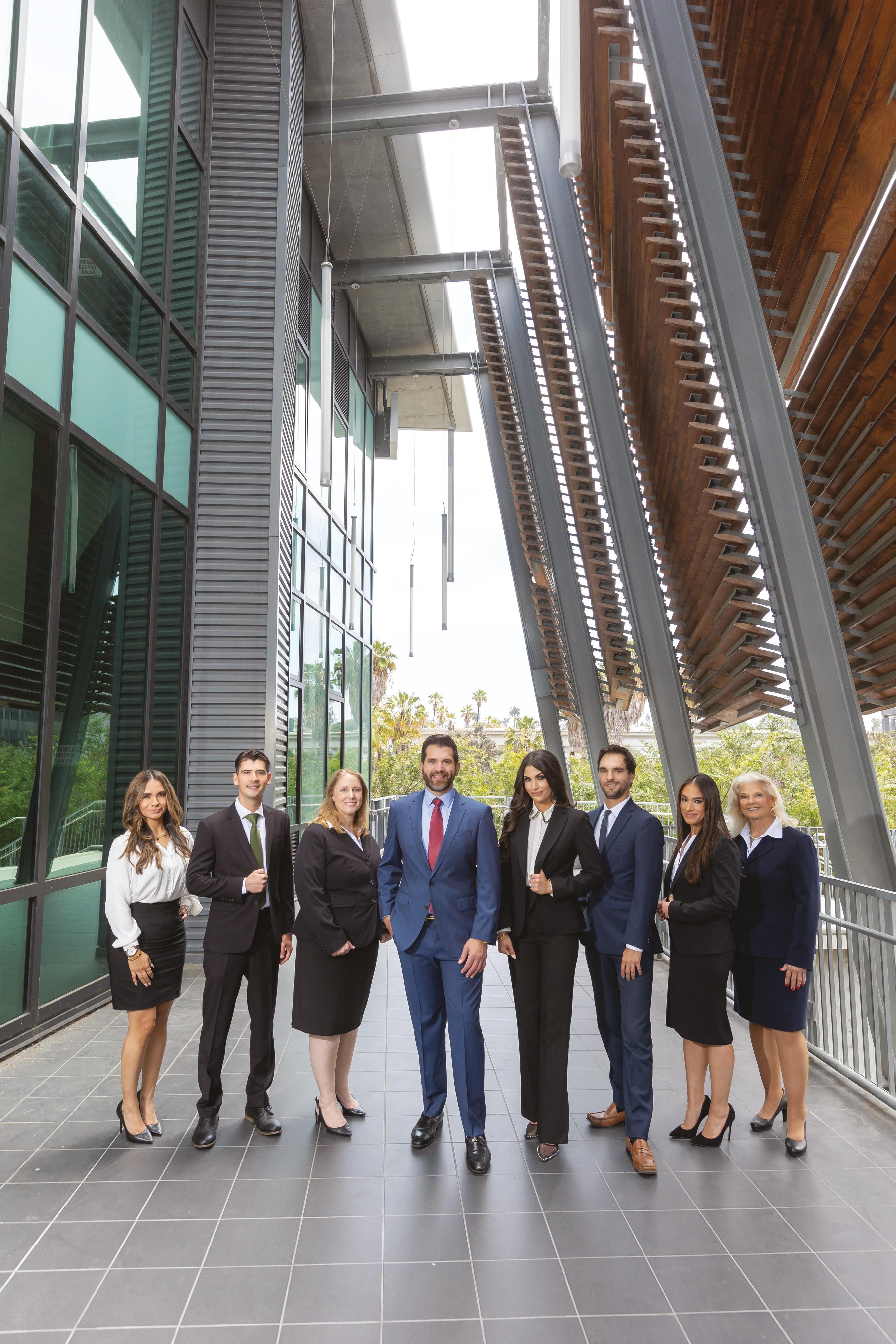
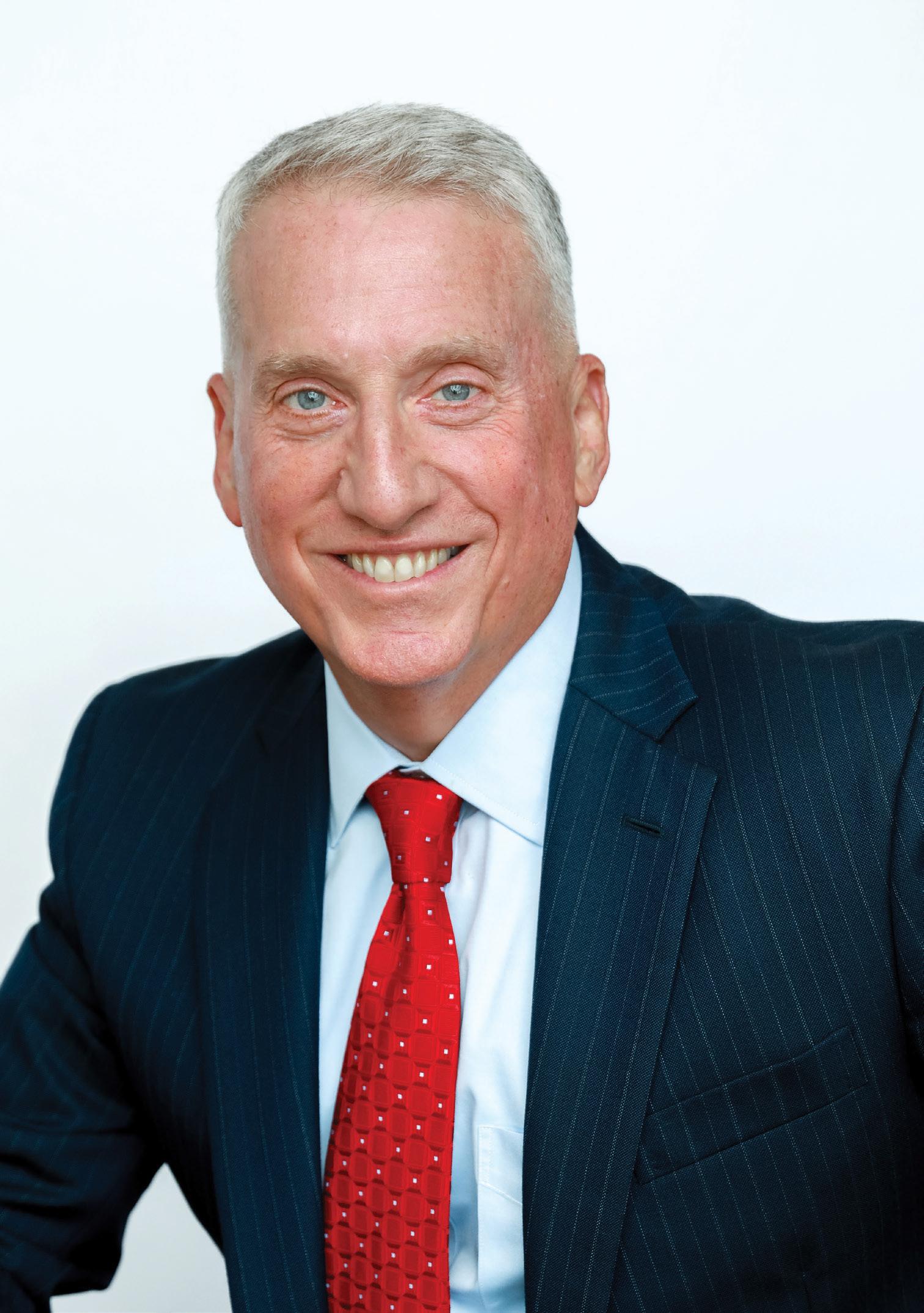

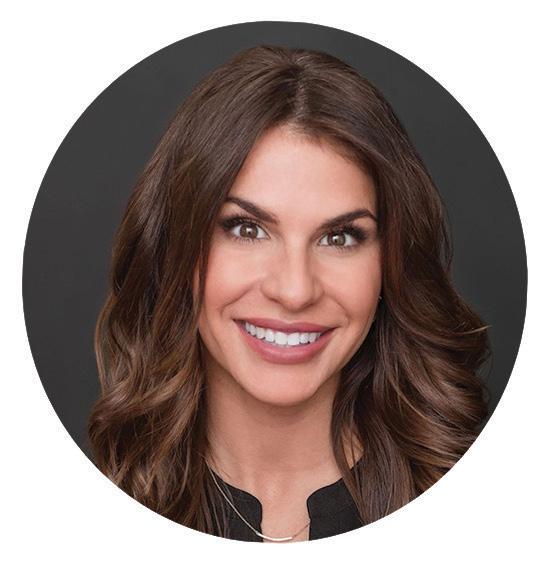
Paul Starita & Gomez Trial Attorneys Your partner in: • Federal government claims • Qui Tam Litigation • Toxic Torts including Camp Lejeune Claims Meet Erica Caviness: Erica acts as the Firm’s ambassador to attorneys outside of the firm interested in referrals, co-counsel and other mutually beneficial opportunities. We absolutely guarantee that she is a person you will want to meet and a friend you will always value. referrals@thegomezfirm.com Referral Fees Paid Consistent With the Rules of Professional Conduct 833.GET.GOMEZ | 619.237.3490 655 West Broadway | Suite 1700 | San Diego, CA 92101 | thegomezfirm.com
 by Dan Baldwin
by Dan Baldwin


2021 2022 LAW FIRM OF THE MONTH JOURNALS
From left to right: Partners Sarah Kelly-Kilgore, Evan Borges, Michael Strub, Alan Greenberg, Wayne Gross, Deborah Mallgrave, and Brian Williams
Continuing Evolution of Greenberg Gross LLP
© Sheri Geoffreys Photography, Inc.
The
Business Litigation Expertise for Societal Good
We started this firm a decade ago to litigate complex business cases at the highest level. That mission remains but we have evolved to use our business litigation expertise to make a difference,” says Wayne Gross, Co-Founder of Greenberg Gross LLP. Alan Greenberg, Managing Partner, and Co-Founder, agrees. “We have grown organically based on opportunities to serve not only our expanding client base but also to make a positive impact on society.”
Founded in 2013, Greenberg Gross has focused on being the business litigation firm of choice for plaintiffs and defendants in bet-the-company trial work across the country. The firm started with one office based in Orange County. Today the firm has four offices: Costa Mesa, Los Angeles, Las Vegas, and New York, and a team of top lawyers who handle high-stakes matters for a roster of large companies, executives, celebrities, and law firms. Consistent victories in the courtroom and over the negotiating table have made Greenberg Gross one of the elite business litigation boutiques in the country. The firm is routinely listed as one of the country’s “Best Law Firms” by U.S. News Media Group for commercial litigation. Greenberg describes the other side of the litigation “coin.” “What many people don’t focus on are all of our cases that settle before we ever step foot in the courtroom. Our reputation in the courtroom often makes opponents settle early to avoid losing at trial.”
A Rare Ability to Turn the Tables
on Adversaries
Over the past decade, the firm has won numerous high-profile business trials, including a recent $70 million arbitration award on a counterclaim for a public company called Advantage Solutions that was defrauded by a company called Take 5. The facts of this case illustrate how adept the firm is at turning the tables on adversaries. Take 5 operated a business that conducted email advertising for customers, utilizing a proprietary database. Take 5 sold that business to Advantage for $77 million, plus a potential earn-out of up to $50 million depending on the performance of the business after the sale. After purchasing the business, Advantage discovered that a large part of Take 5’s business was fraudulent and that Take 5 had been scamming its customers. Upon discovering the fraud, Advantage notified law enforcement that it had unknowingly acquired a business that was engaged in systemic fraud. Advantage shut down the acquired business and offered refunds to the defrauded customers.
Take 5 commenced an arbitration against Advantage, claiming that Advantage had shut down the business to avoid paying the $50 million performance earn-out. Advantage retained Greenberg Gross, which filed a counterclaim on behalf
of Advantage. In August 2022, after a 15-day evidentiary hearing, the arbitrator ruled in favor of Advantage. The arbitrator denied Take 5’s entire claim and awarded Advantage $70 million on its counterclaim.
“Our company was faced with not only having to litigate a complex, multi-year arbitration, but also with having to interface with federal authorities. Greenberg Gross represented us superbly with both.”—Bryce Robinson, General Counsel of Advantage Solutions
The victory for Advantage Solutions is by no means unusual for the firm. Indeed, the firm was founded as a result of Greenberg and Gross turning the tables on bad actors. In 2011, the two, while partners at a global law firm, co-tried a case on behalf of a Southern California real estate development company named Newport Capital Advisors (“NCA”) that had been defrauded by an East Coast investment fund. NCA, under the leadership of its principal, David Zak, had entered into a billion-dollar joint venture with the fund to redevelop aging Hollywood buildings and restore the area to its previous glory. The joint venture partners acquired four Hollywood properties, including the famed Hollywood Palladium, with the developer identifying and developing the properties and the investment fund providing the financial backing. After the properties gained $35 million in market value but before the development was completed, the investment fund sought to disavow the joint venture and shed itself of the developer, hoping to insert its own developer on the projects. Indeed, the investment fund, like Take 5 and its principals, filed the initial action, claiming in their case that the lack of a signed partnership agreement meant that the developer was effectively a service provider working for fees and not entitled to partnership rights. In response, Zak unleashed Greenberg and Gross who, instead of simply defending the lawsuit, filed a countersuit alleging that the investment fund, as a joint venture partner, had not only violated its fiduciary duties but did so fraudulently, entitling the developer to punitive damages. As Gross explained: “As a former federal prosecutor, I knew how to leverage an adversary’s bad conduct, and use it not just defensively as a shield, but affirmatively as a sword.” And use it they did. After a four-week trial in Los Angeles Superior Court, the jury awarded the developer $50 million, which included $34 million in punitive damages. Zak explained: “It’s not often that you get sued, go to trial, and come out $50 million ahead.” The developer was so appreciative that he told the duo that they should consider forming their own firm.
“I’ve been around a lot of really good lawyers over the years, but these two are a force of nature. It was their destiny to go out on their own and show the world what they could do.” -NCA Principal David Zak
17 Attorney Journals San Diego | Volume 231, 2022
The Backgrounds of the Founders Meshed Perfectly and Resulted in a Winning Formula
Following Zak’s suggestion, the duo started Greenberg Gross LLP in April 2013, and immediately took advantage of the freedom to do things their way. Greenberg explained: “It was liberating to be free of big-firm restrictions and to have the freedom to take on any case we felt was worthy of what we bring to the table.” They decided that they would continue focusing on complex business litigation for companies and executives that are sued but would also take on cases for companies and other clients that were wronged and were entitled to recover losses. And they would take on those cases for plaintiffs using contingent fees and other alternative fee arrangements. “We were finally able to tailor each engagement to what was in the best interests of each client,” said Gross.
The duo also decided that every lawyer at the firm would be trained from the beginning to be a trial lawyer, not just a litigator. As explained by Greenberg, “Some firms seek to do everything. We just wanted to be the best at what we do.” Interestingly, Greenberg started his legal career in New York as a transactional lawyer working on Wall Street financial transactions. While enjoying the intellectual challenge of the work, he decided early on that he was meant to be in the courtroom. “Everything happens for a reason. My Wall Street background enabled me to litigate complex business cases in ways many lawyers cannot.”
From 1990 through 2007, he worked at high-end litigation boutiques in Orange County, before joining the international firm where he would meet Gross.

Gross, born as an orphan in San Francisco, grew up in a working-class neighborhood where he developed the grit
that has stayed with him to this day. “The benefit of a tough neighborhood is that you develop toughness that can later be applied in numerous ways.” In Gross’s case, it meant that he would one day become a federal prosecutor. “The U.S. Attorney’s Office was a fantastic laboratory in which I learned not just how to try complex fraud cases against the most formidable opponents, but also how to put cases together before entering the courtroom.” According to Gross, “Many lawyers engage in pretrial discovery without the slightest idea of how they will use such evidence at trial. I learned the exact opposite approach.” Gross left government service for private practice in 2007, subsequently meeting Greenberg at the international firm where both felt an immediate kinship. “We came from backgrounds that were different but entirely complementary. We also shared a common vision on how complex business cases should be tried.”
And it was that chemistry that enabled the firm, over the ensuing decade, to win not only the $70 million Advantage Solutions case but numerous other high-stakes trials, including:
• In 2014, following a two-week jury trial, a multi-milliondollar verdict on behalf of the former chief operating officer of dialysis centers who sued the owner for failing to pay the COO his share of the $43 million sale of the centers. The jury found the defendant owner/seller liable for fraud and breach of contract. (KV Kumar v. Gadsalli Ravikumar, Orange County Superior Court Case No. 30-2013-00657199)
• In 2015, following a seven-week jury trial, a complete defense verdict and a multimillion-dollar verdict on a counterclaim, including punitive damages, on behalf of a global engineering firm that had acquired the assets of a local company only to
18
Partners Alan Greenberg and Wayne Gross
Inc. Attorney Journals San Diego | Volume 231, 2022
© Sheri Geoffreys Photography,
discover that the company and its principals had engaged in wrongdoing. The principals, like the Take 5 principals, had sued the engineering firm for failing to pay an earnout. (Michael Colaco v. Cavotec SA, Orange County Superior Court Case No. 30-2012-00601735)
• In 2018, following an eight-week jury trial, a complete defense verdict for Buchalter, an AmLaw 200 law firm, in a $600 million RICO and fraud case brought by the heirs to the Alta-Dena Dairy fortune. The plaintiffs claimed that a close family friend conspired with a former law firm partner to gain control of the heirs’ estate and siphon off millions under the guise of implementing a highly complex estate plan. The jury rejected the claims, resulting in a complete victory after more than eight years of litigation. (Ruth McClamma Stueve, et al. v. Raymond Novell, et al., Orange County Superior Court Case No. 30-2010-00411651)
• In 2020, following a two-week jury trial, a jury verdict on behalf of an inventor against Uber Technologies, Inc., and its founders in the first phase of a $1-billion trade secrets theft case. The inventor began developing his concept as far back as 2002, creating a peer-to-peer service for passengers to summon drivers using cellphones, and to track the drivers using GPS, which he shared with the founders of Uber in 2006—four years before the launch of Uber— under a promise that they would keep it secret. He sued Uber and its founders in 2015, but the defendants claimed the suit was barred by the statute of limitations. After a two-week trial, the jury found that the inventor timely filed his suit. (Halpern et al., v. Uber Technologies, Inc., et al., San Francisco Superior Court Case No. CGC-15-545825)
The Secret of the Firm’s Success
The firm’s many trial victories, along with scores of favorable settlements, are no fluke. As explained by Greenberg: “The most important ingredient to our success is our team. We hire only the best and brightest, and then train and manage them in a way that maximizes their potential.” When hiring attorneys, the firm looks not only for top talent, but also for the willingness and drive to evolve with the firm and as an individual attorney. “We are very selective in our hiring. We want lawyers who have the desire and capability to provide world-class service,” Greenberg said. According to Gross: “Our clients, whether a large public company or an individual, typically come to us when they are facing an extremely significant crisis. They deserve our absolute best effort to get them through that crisis.”
The firm believes that those lawyers who dedicate themselves in this manner are compensated in ways that go beyond the financial rewards of a successful legal practice. “We’ve seen junior lawyers join us right after law school or after a few years at a large firm and mature in ways that are amazing. It has been extremely gratifying to play a role in that transformation. Our intensive training program is a significant part of that growth,” Greenberg said.
Hiring the right attorneys is only the beginning. According to Greenberg: “When we started, Wayne and I were involved in every case, read every pleading, and made every major strategy decision. By doing so, we effectively trained our lawyers on a daily basis to work cases the way we do. We no longer do that because the firm is simply too big,” Greenberg says. The firm took dramatic action and created its own inhouse training programs. The programs included constructing state-of-the-art courtrooms in its offices to maximize the learning experience. Before every trial, Greenberg and Gross, along with other senior partners, use the courtrooms to help prepare the lawyers who are going to trial.
In addition to using the courtrooms to teach trial advocacy, the firm uses them to train its lawyers on how to conduct pretrial discovery. “Every lawyer at the firm is trained from the beginning to be a trial lawyer, not just a litigator. Many business litigators at other firms approach pretrial discovery without focusing on how they will use the evidence at trial. Our lawyers begin envisioning how a case can best be presented from the first day they are assigned to a new case. They are taught to conduct all pretrial discovery, including depositions, interrogatories, and requests for production, with that single-minded focus,” Gross says.
 Partners Deborah Mallgrave and Wayne Gross
Partners Deborah Mallgrave and Wayne Gross
19 Attorney Journals San Diego | Volume 231, 2022
© iLawyer Marketing
The Buchalter trial proved the point. The firm had an associate conduct a cross-examination of a hostile witness called by the plaintiffs. Prior to the examination, the associate, using evidence obtained during pretrial discovery, conducted several practice cross-examinations in a Greenberg Gross courtroom. The practice sessions were used by Gross and the associate to refine both the questions and strategy. At trial, the associate’s cross examination was extremely effective and received high praise from the client.
Hire the Attorneys the Attorneys Hire
Perhaps there is no greater badge of excellence than being the firm called on when big law firms require aid in handling their own legal challenges. “If you want the best doctor for a particular specialty, find out whom other medical professionals turn to when they are in need of that specialty. There can be no higher endorsement,” Gross says.
One example of this was the Buchalter suit in which the firm was called upon to defend the AmLaw 200 firm in a multimillion-dollar lawsuit brought by the heirs to the AltaDena Dairy fortune. The heirs alleged that an estate planning attorney, who had worked at Buchalter between 2007 and 2010, engaged in various forms of misconduct relating to the dairy family’s estate plan. The parties conducted more than 100 days of depositions, exchanged hundreds of thousands of pages of documents, and collectively designated more than 20 expert witnesses. The case proceeded to trial in July 2018. The lawyer for the heirs told the jury in opening statement that Buchalter should be held responsible for damages in the range of $150 million or more. The case included a claim for violation of RICO that, if successful, would have resulted in treble damages and an award of attorney fees. Prior to closing arguments, the defense team won a directed verdict on the issue of punitive damages. After reviewing all of the evidence presented by both sides, the trial court concluded that Buchalter did exactly what employers are supposed to do when presented with a claim of misconduct against the estate planning attorney. The case went to the jury, which returned a complete defense verdict, rejecting all claims by the heirs and requiring them to reimburse Buchalter for various costs of defending the lawsuit.
“Greenberg Gross is strategic, tenacious, and in consummate command of the evidence and the law. They ensured that we were well represented every step of the way.” —Buchalter Executive Vice President, Pamela Webster
Business Litigation Expertise for Societal Good
At the beginning of 2020, an event occurred that caused Greenberg Gross to forever expand its complex business litigation practice to serve clients in other types of cases. As explained by
Gross: “The firm had just won a landmark trade secrets trial against Uber. Alan and I were both in San Francisco for a postverdict status conference and decided to visit the dean of UC College of the Law, San Francisco, which is within walking distance of San Francisco Superior Court.” While walking through San Francisco’s Tenderloin District, Greenberg and Gross were appalled by the neighborhood’s deterioration. Per Gross, “Homeless tent camps blocked sidewalks, open-air drug sales were in plain view and blight ruled.” The worst part for Gross, who was born in San Francisco, was that thousands of children, both housed and unhoused, lived there. “I was an orphan who, but for my fortunate adoption, could easily have found myself there. Something had to be done to give them a chance.” The firm offered its pro bono services to the law school and filed a groundbreaking federal lawsuit in May 2020 against the City and County of San Francisco. The lawsuit resulted in a Stipulated Injunction the following month, under which the City was required to offer safe housing to reduce the number of tents in the Tenderloin, and to enforce state and federal laws in the Tenderloin consistently with how they are enforced in more wealthy San Francisco neighborhoods. (Hastings College of the Law v. City and County of San Francisco, 4:20-cv-03033 (ND Cal.). As explained by Gross: “The change was fast. City officials are subject to powerful political forces that at times can cause paralysis. We wanted to see if involving the power of the federal court system could help and it did.”
The positive outcome in the Tenderloin suit led Greenberg and Gross to see how the firm could use its platform and business litigation expertise to serve other important societal causes. As explained by Greenberg: “We knew that our expertise in business litigation could be of service to clients in other types of cases involving societal issues.” The firm found its opportunity to do so in the California Child Victims Act (AB 218). In 2019, the California legislature passed the landmark legislation, which afforded survivors of childhood sexual assault an “open window,” during which they have until December 31, 2022, to file claims that would otherwise be barred by the statute of limitations. As a result, the firm, during the same time period of the Tenderloin lawsuit, opened a new practice area to represent survivors in sexual abuse and human trafficking litigation. According to Wayne Gross: “We knew we could assist survivors of childhood sexual assault in a manner that was not being done by the traditional small plaintiff shops that specialize in assault cases.” To educate the public on this landmark legislation and the cases that may now be filed as a result, GG created a new website: FightForSurvivors.com.
Since starting this new practice area, the firm has been retained by hundreds of survivors of childhood sexual assault and has already obtained multi-million settlements for numerous survivors. But the firm views these cases as providing far more than monetary recovery to survivors. As explained by partner Deborah Mallgrave, co-chair of the firm’s Sexual
20 Attorney Journals San Diego | Volume 231, 2022
Assault and Human Trafficking practice group: “These cases often provide emotional closure to individuals who have been enduring internal torment since childhood. Additionally, we have found that the ravages of child sexual assault cut across all swaths of society and strike people from all walks of life.” One case filed by the firm is one of the largest and most significant cases ever brought under the Trafficking Victims Protection Act of 2000, against a global religious sect called La Luz del Mundo (“LDM”) for the alleged sexual abuse and financial exploitation of minors. (Martin v. La Luz Del Mundo, 2:20cv-01437 (CD Cal.)). Gross and Mallgrave lead the team that is pursuing this RICO case against the church, which is built around a doctrine of subservience to its leader, the “Apostle,” who is alleged in the suit to sexually abuse children and adults, to exploit children for forced unpaid labor, and to engage in extortion and money laundering. After this groundbreaking suit was filed, the leader of the sect pled guilty to sexual assault felonies and is now serving time for those offenses.
Based on the positive impact of the Child Victims Act, the California legislature recently passed a similar law to address the injustice suffered by many survivors of adult sexual assault: The California Sexual Abuse and Cover Up Accountability Act (AB 2777). Starting January 1, 2023, survivors of adult sexual assault will have one year, until December 31, 2023, to file claims against perpetrators and entities that covered up their sexual assault. As explained by Brian Williams, the co-chair of the firm’s practice group: “For more than two years, our practice group, comprised of not only lawyers and paralegals, but also victim advocates, has developed the expertise to pursue cases for child sexual assaults that occurred decades ago, in a manner that has never been done. Cases often don’t get better with age because memories fade and evidence sometimes disappears. We know how to overcome those obstacles and look forward to applying that expertise to adult assault cases in the same powerful way.”
In addition to adding sexual assault matters to its robust business litigation practice, the firm, in 2020, was called upon to represent the PG&E Fire Victim Trust in litigation against vegetation management companies and consulting companies for their roles in devastating fires in Northern California in 2017 and 2018, which caused many fatalities and billions in property damage. As explained by Alan Greenberg: “There’s a tremendous amount at stake because of the tragic loss of life and the billions in damages. It is our mission to recover as much as possible for the victims so that they may have closure as they attempt to put their lives back together. Additionally, it is imperative that we send a powerful message to those companies who do business with public utilities to think twice before putting California residents and businesses in harm’s way.”
The Future of the Firm

Since its founding a decade ago, the firm has continued to evolve in ways that were not necessarily anticipated by the founders when they opened the firm’s doors. Greenberg summed it up as follows: “We expected that the firm would be successful. What we didn’t anticipate was that this would be such a remarkable journey in which we would be called upon to serve others in so many diverse ways.” Gross agreed by saying: “What we’ve learned is that business trial lawyers need not be confined to business disputes. The world needs us in more ways than that. We will continue to answer that call.” n
Contact
Greenberg Gross LLP
650 Town Center Drive, Suite 1700 Costa Mesa, CA 92626 (949) 383-2800 www.ggtriallaw.com
© iLawyer Marketing 21 Attorney Journals San Diego | Volume 231, 2022
From left to right: Partner Deborah Mallgrave, Counsel Jemma Dunn, Partner Wayne Gross, and Partner Brian Williams


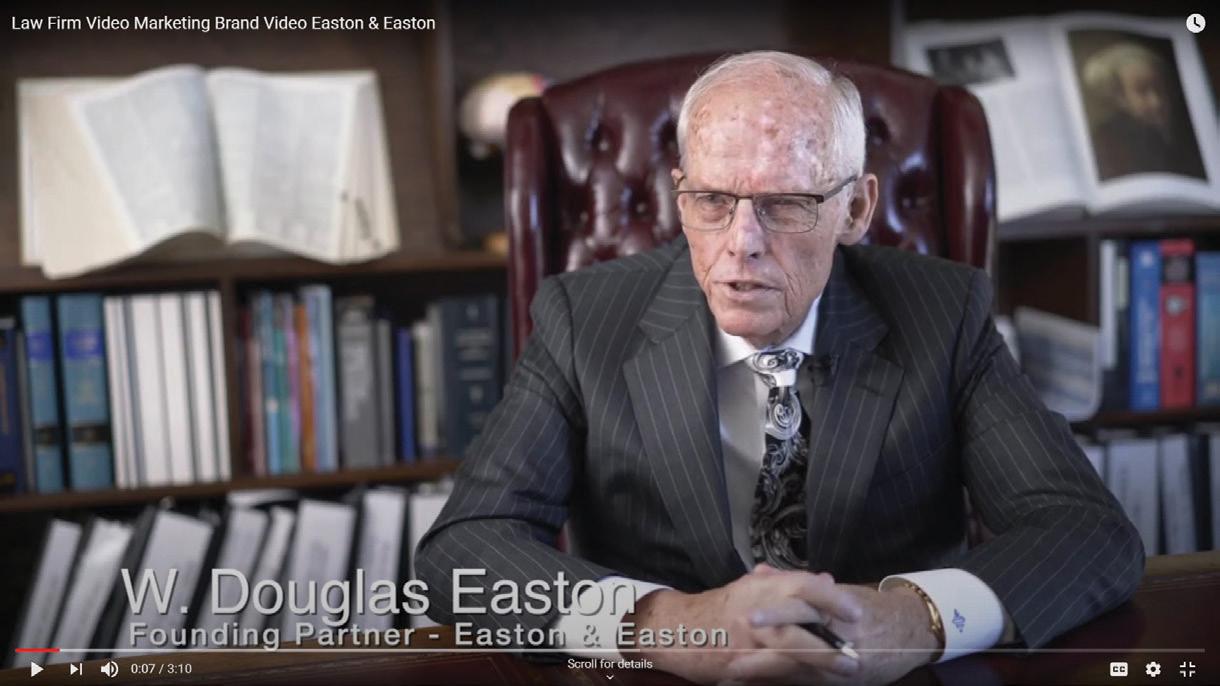
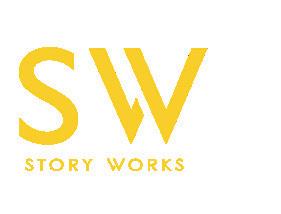
Visit www.storyworks.io to watch a recently completed video project and testimonial. CREATE BUSINESS GENERATING VIDEO MARKETING CONTENT Say Goodbye to Expensive Pay-Per-Click Generate Your Own Internet Leads Attorney Journals is Proud to Announce Our Partnership With Story Works to Help Drive New High-Value Clients to Your Law Firm NEW CLIENT PROMOTION – LIMITED TIME! Mention you heard about Story Works in Attorney Journals and receive $1500 OFF your first video project with us! For more information, contact Christopher Todd at chris@storyworks.io or 800-501-2063 www.storyworks.io
Getting digital marketing strategies adopted and implemented within a law firm is not without its challenges. According to our Law Firm Digital Marketing Survey, the biggest roadblock is convincing firm leadership to try new tactics, with 57% of firms citing this as an obstacle. Also, just over half of the firms surveyed reported lacking the time to expand digital efforts, likely due to overburdened marketing staff. Forty-one percent of respondents reported another challenge – keeping up with the rapid changes in best practices for marketing a law firm due to new algorithms, platforms, and new technologies offered by established players and startups, no surprise given the large need for marketing training within these firms.
Despite the many challenges of marketing a law firm, digital marketing is crucial for your firm since the average person spends so much time online, including hours on end connected via their smartphone. Here are some of the most effective solutions to overcome the various challenges that law firms face when marketing a law firm to potential clients.
What Are Some Common Challenges of Marketing a Law Firm?
There are many challenges legal marketers may face in the legal industry, such as:
• Not getting a return on investment with costly channels
• Not being able to prove the importance of marketing to higher-ups
• Trying to keep up with the ever-changing scope of legal marketing
• Maintaining a sufficient budget
• Leveraging new tactics successfully (without the ‘throwing something at the wall and hoping it sticks’ method)
• Recruiting talent
• Knowing which tools to use
• Getting beat out by your competitors
• Lack of time
How to Overcome Challenges When Marketing a Law Firm
by Guy Alvarez
How to Overcome Challenges When Marketing a Law Firm
Provide Marketing Education
The first step to easing your firm into widespread acceptance of digital marketing is to train both marketing staff and attorneys. You need to take steps to ensure that you and your marketing team all understand digital marketing, at least at a basic level. This will help lead to a consensus when it comes to decisionmaking as well as an enthusiasm for digital marketing. Some simple yet effective methods of giving your team marketing education include presentations at a retreat, online courses, meetings, and providing reading materials.
In the educational materials, emphasize that marketing a law firm is based on building relationships and personal contacts. You should also make it clear that lawyers can take slightly different approaches to marketing based on their strengths and individual knowledge.
Measure and Share Success
Law firms are not likely to invest in new marketing strategies without data to support their effectiveness. Since success stories regarding your marketing provide motivation for your team and the necessary attention from firm leadership, it’s essential that you measure the impact of your digital marketing efforts. Just calculating the website visits or social media engagements is not enough. Partners want to see concrete proof of ROI and despite what some legal marketers think, this is possible. There are many legal marketing tools that allow you to analyze and report on the direct impact emails, content, and social media messages have on bringing in new clients and converting prospects.
Get Input from Clients
When it comes to digital marketing, your clients are an extremely useful resource for understanding your target audience. They will be able to tell you about their experiences with your firm and

24 Attorney Journals San Diego | Volume 231, 2022
deliver an honest assessment of what worked well and what they suggest you change. The simplest method of getting client input is via a survey or something similar. If clients are interested, you could even have one or two speak during your marketing training retreat. Attorneys’ main motivation is generating new leads and bringing in new clients. By using real clients to prove the value of digital, attorneys are more likely to understand the need for investing in this form of marketing.
Leverage Technology
There are quite a few marketing technologies out there that can not only make your life easier but also help improve the ROI of your marketing plan and help you gain an edge against your competitors. Many law firms are hesitant to utilize data to its fullest extent, and they often get left behind once top-ranking firms hop on the trend. For example, one of the latest data technologies—intent data—allows law firms to view the intent of buyers based on their online activities. Imagine how much more streamlined and cost-efficient your marketing efforts could be with the knowledge of who will convert and when? Leveraging this type of technology is an easy and cost-effective way to overcome many marketing challenges.
If you’d like an in-depth overview of how law firms can harness the power of intent data, register for this free webinar: How Law Firms Can Use Intent Data to Enhance Their Marketing and Business Development Efforts.
Outsource When Needed
It’s okay to admit you don’t have it all figured out. In fact, digital marketing has become such a vast and ever-changing field, that even many solo marketers aren’t experts on everything. Consider outsourcing a few of your deliverables. One of the best ways to make improvements when marketing a firm is to outsource when necessary. For example, SEO is a very time-consuming, slow-moving strategy. And Google’s neverending updates make ‘becoming an expert’ on search engines quite a tall order. So, consider seeking out a legal marketing agency or search engine optimization expert to help you in the departments you don’t have time to become an expert in. And surprisingly, this can even lead to saved money as now you’re not investing money into wasted efforts or hiring more employees for your own department.
Leverage Your Employees
Are you low on social media engagement? Are you not getting as many referrals? Behind on writing blogs? Well, other members of your team may be able to help you with this. It’s no secret that lawyers are very busy people, but there are many ways they can aid you in your marketing and business development efforts that take very little effort. For example, you can use
a platform like SocialHP to make it easy for your lawyers to reshare your social media posts and blog posts in order to up engagement. Or consider coaching your lawyers on business development, so their meetings with clients will lead to more revenue for the firm in the long run.
Understand What’s a Myth and What’s an Actual Concern
Many marketers avoid certain tactics or ideas because they believe it’s not worth their time or money. But believe it or not, many of your fears or beliefs, although grounded in some truth, may just be a gross exaggeration of what will actually happen if you try new tactics.
Automate, Automate, Automate
Marketing automation is not a new idea, but many law firms are not leveraging it as much as they should. With a robust marketing automation system, such as HubSpot, you can automate a number of tasks, and in the end improve the ROI of your efforts, free up time for your team, and improve your relationships with your prospective clients. You can automate emails based on users’ actions, schedule social media posts at the best-performing times for your pages, organize your database into segments for increased ROI, and much more. You should always look for opportunities to automate and leverage them whenever possible.
Consider Advertising
It’s no secret that digital fatigue is on the horizon and many consumers are numb to traditional advertisements of legal services. And on top of that, due to the great cost of traditional ads like TV or billboards, many law firms shy away from advertising altogether because they feel it’s too expensive. However, there are many cost-efficient forms of advertising, such as paid social media ads or Google PPC ads, that allow you to cap the cost and work within whatever budget you have.
Takeaway: For most legal marketers our survey results are not surprising. Law firm marketing teams are struggling to implement digital marketing initiatives due to a lack of buyin from firm leadership and a lack of education. However, through proper training, in-depth measurement, and client feedback, legal marketers can effectively overcome the many challenges they face when it comes to digital marketing. n
Guy Alvarez is the founder and Chief Engagement Officer. Guy is intimately familiar with all aspects of the professional service firm. First, he worked as a law firm associate. Later, he joined ALM Media where he built websites for some of the largest US law firms. After ALM, Guy honed his skills while running KPMG’s Global Digital Marketing group. Learn more at www. good2bsocial.com.

25 Attorney Journals San Diego | Volume 231, 2022
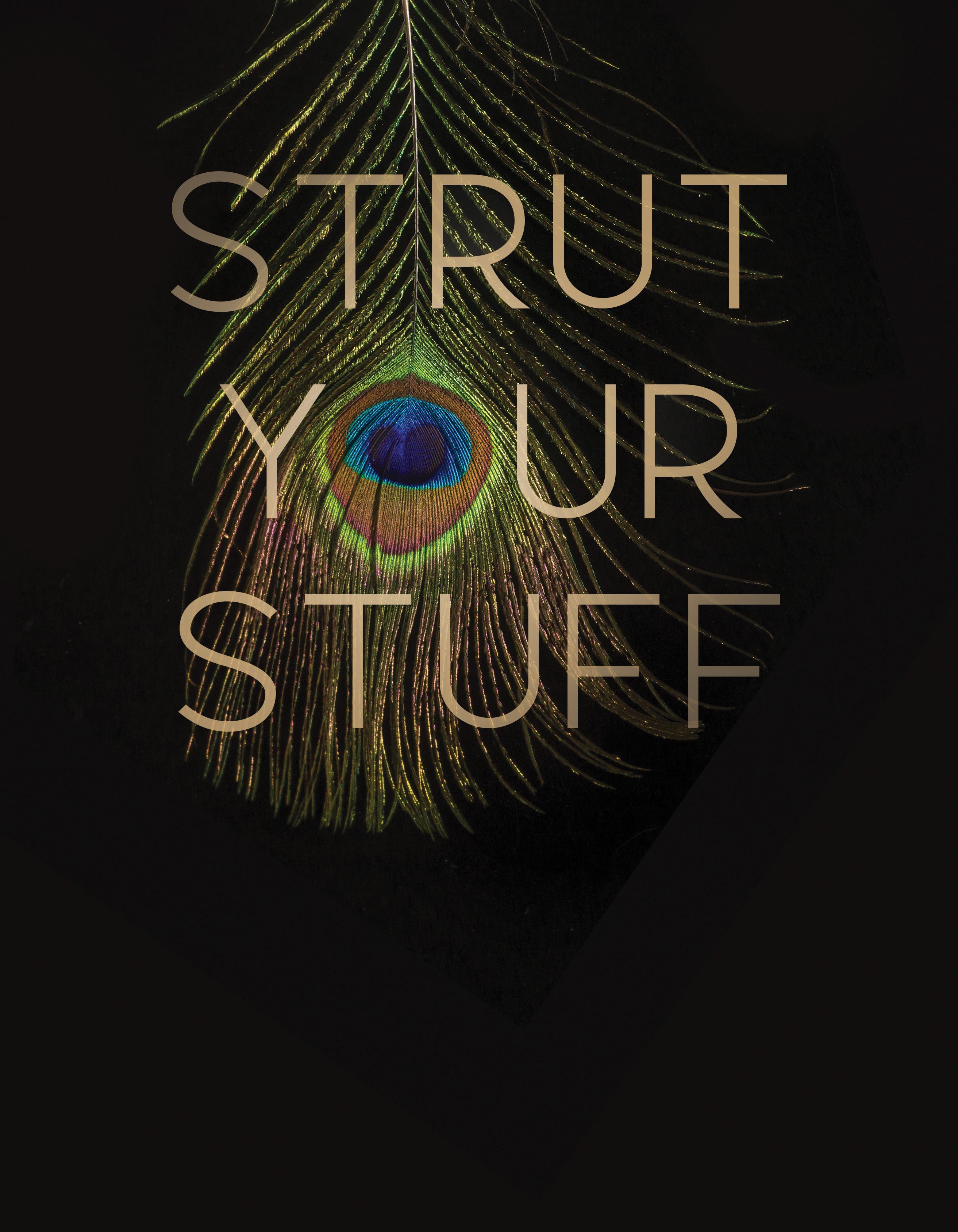
We’ll help your firm stand out and get the attention it deserves! Marketing Strategy | Branding & Identity | Writing | Website Design Interactive Presentations | Print, Digital & Social Advertising 215.550.1435 | penn-creative.com
San Diego’s Leading Elder Litigation Attorneys


402 WEST BROADWAY, SUITE 1950, SAN DIEGO, CA 92101 • (619) 831-6969 WWW.CALIFORNIAELDERABUSELAWYER.COM PRACTICE AREAS Nursing Home Neglect & Wrongful Death Financial Elder Abuse Will & Trust Litigation
Inheritance Disputes
Referral Fees Paid
Partners: Joel Bryant, Rob Dieringer, and Jessica Wilson
We litigate elder abuse claims in both civil and probate court. We focus on three main areas: nursing home neglect and wrongful death; financial elder abuse cases; and will and trust litigation cases—including inheritance disputes. Our breadth and depth of litigation experience—combined with specialized subject-matter knowledge in elder law—gives us a competitive edge and a unique perspective that translates into excellent results for our clients.
This is an observation (with my emphasis) by Robert Miller, co-creator of the Miller-Heiman selling system, in the foreword to his book, Strategic Selling. In a few of my blog posts earlier this year, I covered how law firms might go about developing a sales process, so let’s focus now on the buying process to which Miller refers.
Here is a simple depiction of the process that in-house buyers use—written or not, consciously, or not.
When Developing a Sales Process for Your Law Firm, Start with the Buyer’s Process
by Steven M. Bell
Start with this: There are no elective buys. Legal-services buyers make purchases only when they spot a problem, a need, or an opportunity that has legal implications. At that point, they consider ways to proceed, ranging from ignoring the issue to waiting for it to mature to handling it internally to turning to outside advisers.
After considering the options, they determine specifically how to address the issue. If they decide to use outside lawyers, buyers seek referrals from colleagues, friends, peers, and lawyers currently on the account, or they conduct an online search. When the provider is selected, an engagement agreement is executed, the assignment is undertaken and completed, payment is made, and the buyer evaluates the outcome and quality of service.
Depending on the complexity of the issue and the sophistication of the buyer, there are variations on this theme. But whether the buying model is simple, as in the illustration, or more complex, it provides law firms with a template for creating the complementary sales process.
Based on The Buying Process, the complementary law firm sales process might be:

“We can go about selling in a systematic way because there are repeatable processes in both buying and selling.”
PROBLEM RECOGNITION INFORMATION RESEARCH EVALUATION OF ALTERNATIVES PURCHASE DECISION PURCHASE POST-PURCHASE EVALUATION The Sales Process IDENTIFY legal issues that require solutions from law firm Individually EDUCATE clients, prospects, market about issues COMMUNICATE through marketing, digital media EMPHASIZE skills, capabilities, differentiators ASK for work DO great work Conduct post-engagement CLIENT INTERVIEW 28 Attorney Journals San Diego | Volume 231, 2022
The Buying Process
Here’s how it rolls: Through service to existing clients or through reading and research, a lawyer spots an issue likely to affect clients and prospective clients. The lawyer directly informs clients and prospective clients about the danger or opportunity. Using marketing communications, the firm spreads the word more broadly. When a firm finds clients or prospects interested in the issue, it actively reaches out to them via digital nurturing or human contact. To help the buyer with the purchase decision, the law firm stresses its capabilities, experience, strengths, and differentiators with respect to the issue. If this process is followed with discipline, lawyers are in a great position to directly ask buyer(s) for the assignment. When the result is a win, law firms then need to do what they do best: deliver outstanding service. At the conclusion of an engagement, they should elicit the client’s evaluation of the outcome and the quality of service provided.
2. Seek to develop relationships not only with the primary buyer but with buying influencers, including procurement officers and, importantly, support staff such as paralegals and administra tive assistants.
3. Evaluate the firm’s recent wins, and reverse-engi neer the buying process to better understand how these wins were achieved.
4. Add questions about the buying process (and how the firm was selected) to post-engagement client interviews. n
1. Regularly ask clients and prospective clients about buying policies and procedures.
Steven M. Bell is a pioneer of law firm Sales and Business Development, in 2001, Steve created one of the legal profession’s first sales functions at Womble Carlyle Sandridge & Rice (now Womble Bond Dickinson) and has consulted with professional services firms around the globe on establishing and operating sales departments, navigating ethical requirements, and designing compensation systems for professional services salespeople. Learn more at www.lawvision.com.
 Monty
Monty

A. McIntyre, Esq. Mediator, Arbitrator & Referee ADR Services, Inc.
To schedule, contact Haward Cho: (213) 683-1600 and (619) 233-1323 or haward@adrservices.com
Short summaries (one-paragraph), organized by legal topic, of every new published CA civil case, helping CA attorneys save time, win more, and make more money. Monthly, quarterly, annual, and annual practice area publications are available. Subscribe at www.cacasesummaries.com

Here are a few additional steps that law firms can take in order to better understand the buying process:
29
Attorney Journals San Diego | Volume 231, 2022





REFERRAL FEES PAID

WWW.PSBLAW.COM 310.477.1700 1.877.800.1700 UNRIVALED JURY VERDICT S SE TTL E MENT S PE RS ONA L SE RVIC E R EFE RRA L F EE S PANISH SHEA & BOYLE is happy to discuss how we may assist you in your case. Please contact the Honorable Judge Peter Polos (Ret.) for more information at polos@psblaw.com PRSRT STD U.S. POSTAGE PAID PERMIT # 100 CLAREMONT, CA














 by Rex D. Smith
by Rex D. Smith




 by Kevin Vermeulen
by Kevin Vermeulen





















 Partners Deborah Mallgrave and Wayne Gross
Partners Deborah Mallgrave and Wayne Gross










 Monty
Monty





